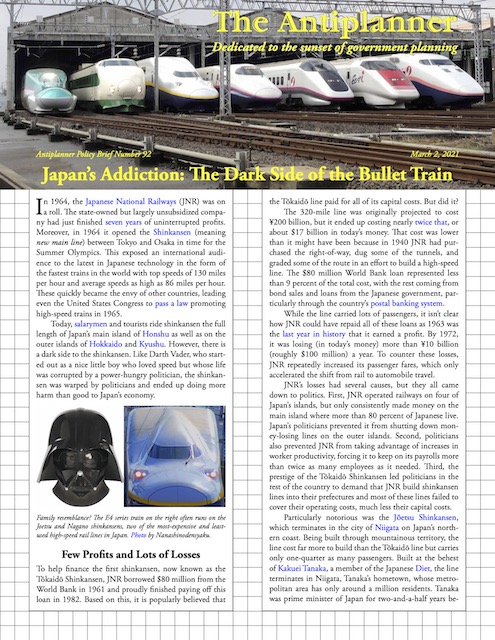In 1964, the Japanese National Railways (JNR) was on a roll. The state-owned but largely unsubsidized company had just finished seven years of uninterrupted profits. Moreover, in 1964 it opened the Shinkansen (meaning new main line) between Tokyo and Osaka in time for the Summer Olympics. This exposed an international audience to the latest in Japanese technology in the form of the fastest trains in the world with top speeds of 130 miles per hour and average speeds as high as 86 miles per hour. These quickly became the envy of other countries, leading even the United States Congress to pass a law promoting high-speed trains in 1965.
 Click image to download a four-page PDF of this policy brief.
Click image to download a four-page PDF of this policy brief.
Today, salarymen and tourists ride shinkansen the full length of Japan’s main island of Honshu as well as on the outer islands of Hokkaido and Kyushu. However, there is a dark side to the shinkansen. Like Darth Vader, who started out as a nice little boy who loved speed but whose life was corrupted by a power-hungry politician, the shinkansen was warped by politicians and ended up doing more harm than good to Japan’s economy. Continue reading







